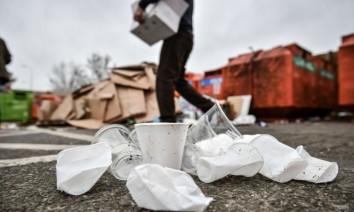Single use plastic is piling up. Is pyrolysis the answer?
19 February, 2019

With global angst mounting about the buildup of plastic ending up in landfills and the environment, chemists and materials scientists are considering pyrolysis as an option. But how does it work? And is it really a solution?
For decades, putting used plastic into recycling bins was considered a convenient way to get rid of rubbish, while doing something worthwhile for the environment. The only problem was, it was almost entirely reliant on China importing it, so the rest of the world could wash their hands of it. Then the Chinese decided they'd had enough.
It left the waste management systems of the world in turmoil, because previously the country had imported two-thirds of the recyclable plastic produced in the world. That astonishing figure shows just how much the rest of the world came to rely on those imports which in many cases, simply ended up being dumped anyway, rather than recycled. Now, around the world, giant bales of plastic are piling up in warehouses.
What if there was a way to simply get rid of it, without filling up more landfills? Or even generate energy, or turn the plastic back into raw materials? Such technologies would naturally be extremely attractive to a world desperately looking for solutions...


